Lucy Williams exhibition at Timothy Taylor Gallery, London
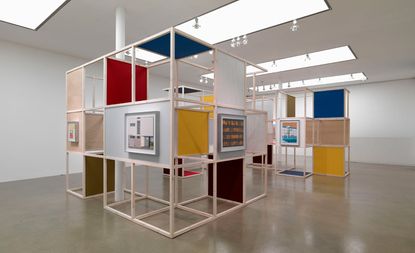
If you are new to midcentury architecture, you might look upon a cache of Modernist snapshots as a far-gone utopia, an optimistic framework for communal living and prosperity built by the Greatest Generation - without all the baggage accumulated in the darker years between then and now.
This is how London artist Lucy Williams comes to her subject matter, residential tours de force by celebrated Modernists like Walter Gropius, Marcel Breuer and Brinkman en van dern Vlugt, the architects who built the Sonneveld House in Rotterdam. In capturing the houses in their midcentury prime, she lends them a happy retro quality, punctuated with Technicolor zips and patterns.
As a result, her second solo exhibition 'Pavilion', 16 vast new works debuting this week at Timothy Taylor Gallery, expresses a sort of anti-Edward Hopper innocence that is only half the story.
Beneath the façades are layers of collage that Williams carfully applies to affect a true structure to her art. Transforming builders' salvage into scale balsa wood panels, steel strips, cork tiles, Plexiglas windows and bricks of real mortar, she assembles architectural bas-relief which increases in depth the closer they are.
The 3m, mural-like 'Montparnasse', based on a photograph of Jean Dubuisson's Maine-Montparnasse apartment complex, is an intricate latticework for which Williams hand-cut thousands of coloured paper fragments beneath a duck-egg sky. Her homage to the Brutalist block is more sanguine and infinitely more involved than, say, Andreas Gursky's iconic photograph of the 1990s.
Her rendition of the library at the Maison de Verre in Paris, designed by Pierre Chareau, sits in stark contrast to the dim, dusty library lore that emerged in the 1970s and 1980s. These books, you are confident, will be read, savoured, enjoyed.
Other works have intense skies fabricated from woven tapestries or cross-stitch.
Williams' attention to detail is second only to those architects who pioneered the Modernist movement. Their stories are absent here, as are the stories behind the families who occupied these spaces, however optimistically or pessimistically. In some works the shades are drawn or the views inside obscured, suggesting something even deeper within, reluctant to come to the surface.
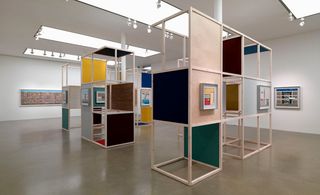
Williams has softened these references by rendering the grid structure in soft wood with peg-board inserts, reminiscent of children's furniture

'Seagram Building', 2012
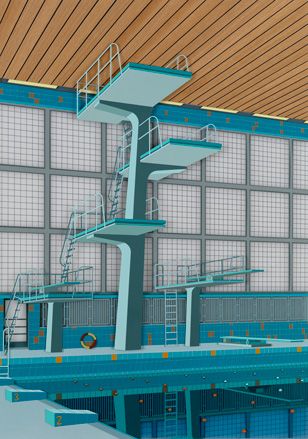
'The Tiled Cathedral', 2012
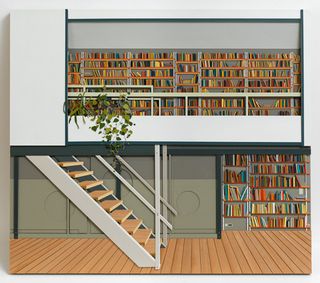
'Continental Interior', 2012

'The Sonneveld House', 2012
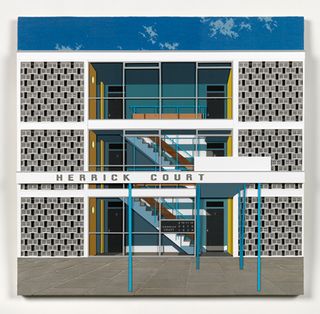
'Herrick Court', 2012
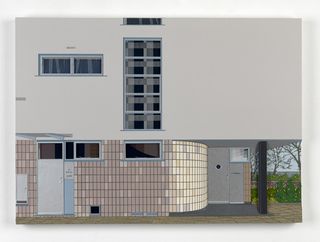
'Nieuwe Bowen (North Elevation)', 2011
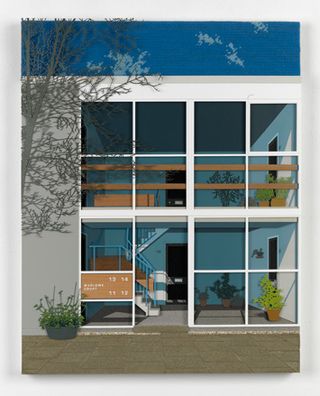
'Parkleys', 2011
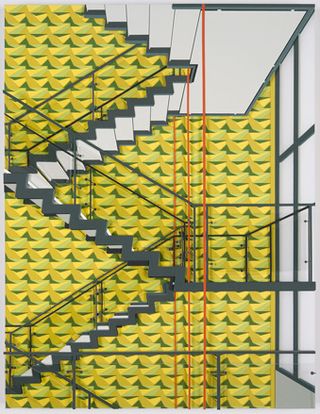
'City Hall', 2011
ADDRESS
Timothy Taylor Gallery
15 Carlos Place
London W1K 2EX
Wallpaper* Newsletter
Receive our daily digest of inspiration, escapism and design stories from around the world direct to your inbox
-
 Dial into the Boring Phone and more smartphone alternatives
Dial into the Boring Phone and more smartphone alternativesFrom the deliberately dull new Boring Phone to Honor’s latest hook-up with Porsche, a host of new devices that do the phone thing slightly differently
By Jonathan Bell Published
-
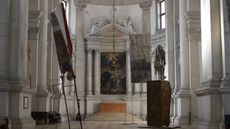 Berlinde De Bruyckere’s angels without faces touch down in Venice church
Berlinde De Bruyckere’s angels without faces touch down in Venice churchBelgian artist Berlinde De Bruyckere’s recent archangel sculptures occupy the 16th-century white marble Abbazia di San Giorgio Maggiore for the Venice Biennale 2024
By Osman Can Yerebakan Published
-
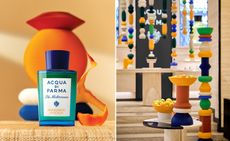 Discover Acqua di Parma’s new Mandarino di Sicilia fragrance at Milan Design Week 2024
Discover Acqua di Parma’s new Mandarino di Sicilia fragrance at Milan Design Week 2024Acqua di Parma and Fornice Objects bring the splendour of Sicilian mandarin fields to Milan to celebrate new fragrance Mandarino di Sicilia
By Simon Mills Published
-
 V&A East announces ‘The Music Is Black: A British Story’, its first major exhibition
V&A East announces ‘The Music Is Black: A British Story’, its first major exhibitionLondon’s V&A East to examine the cultural impact of Black British music with its inaugural exhibition in 2025
By Hannah Silver Published
-
 Gathering: the new Soho gallery blending art and social activism
Gathering: the new Soho gallery blending art and social activismGathering, the newest gallery resident in London’s Soho, will focus on contemporary art exploring systemic social issues. Ahead of Tai Shani’s inaugural show, we speak to founders Alex Flick and Trinidad Fombella about their vision for the gallery
By Harriet Lloyd-Smith Last updated
-
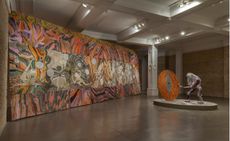 Emma Talbot explores Greek myth and femininity at Whitechapel Gallery
Emma Talbot explores Greek myth and femininity at Whitechapel GalleryIn ‘The Age/L’Età’, her Max Mara Art Prize show at Whitechapel Gallery, Emma Talbot imagines a reality where violence is overturned by resolution, nurtured by an elderly female protagonist
By Martha Elliott Last updated
-
 Cornelia Parker’s major Tate Britain survey explores British fragility
Cornelia Parker’s major Tate Britain survey explores British fragilityAt Tate Britain, Cornelia Parker’s first London survey show dissects politics and history and reframes everyday life
By Martha Elliott Last updated
-
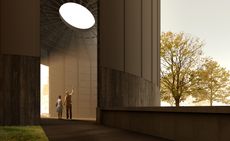 Theaster Gates’ design for Serpentine Pavilion 2022 revealed
Theaster Gates’ design for Serpentine Pavilion 2022 revealedThe American artist and urban planner reveals his plans for the Serpentine Pavilion 2022. Black Chapel has spirituality, music and community at its heart
By TF Chan Last updated
-
 Courtauld Gallery gears up for November reopening following modernisation
Courtauld Gallery gears up for November reopening following modernisationLondon's Courtauld Gallery at Somerset House is set for November reopening following extensive modernisation by architecture studio Witherford Watson Mann
By Ellie Stathaki Last updated
-
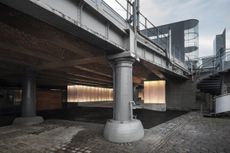 Carmody Groarke revives Victorian vaulted space for Manchester museum
Carmody Groarke revives Victorian vaulted space for Manchester museumArchitects Carmody Groarke revive a vast, brick space for the flexible new Special Exhibitions Gallery at the Science and Industry Museum in Manchester
By Ellie Stathaki Last updated
-
 The London art exhibitions to catch before 2021
The London art exhibitions to catch before 2021Really good art (virtually exhibited or otherwise) has been a form of true escapism in 2020. As the year wraps up (thank goodness!) we round up the best shows to tick off your must-see list in London before the New Year
By TF Chan Last updated